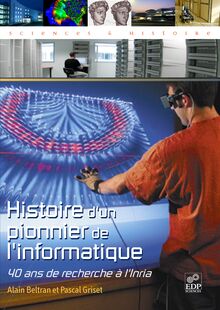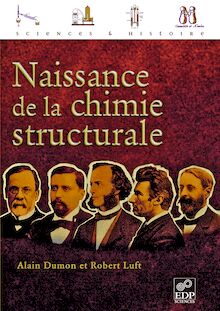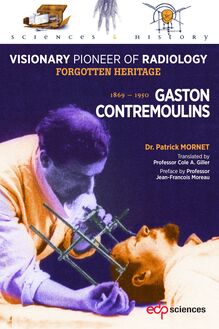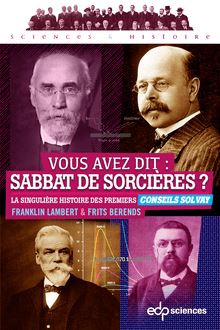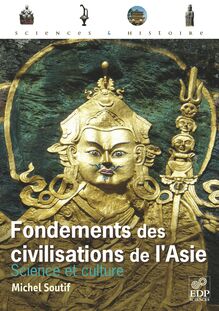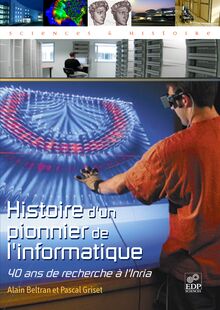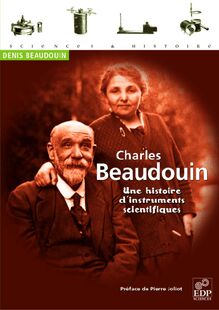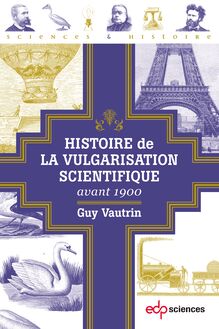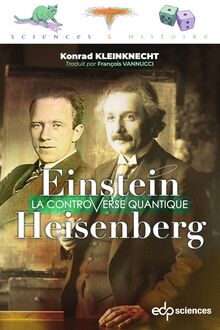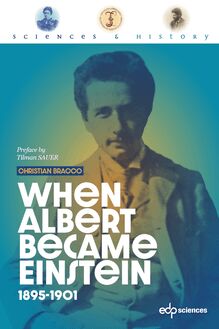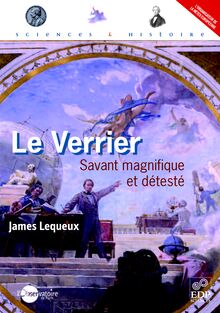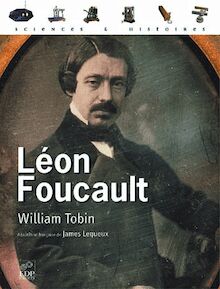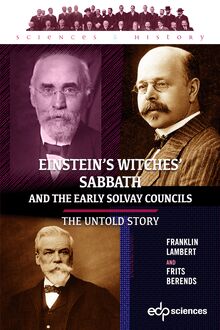-
 Univers
Univers
-
 Ebooks
Ebooks
-
 Livres audio
Livres audio
-
 Presse
Presse
-
 Podcasts
Podcasts
-
 BD
BD
-
 Documents
Documents
-
- Cours
- Révisions
- Ressources pédagogiques
- Sciences de l’éducation
- Manuels scolaires
- Langues
- Travaux de classe
- Annales de BEP
- Etudes supérieures
- Maternelle et primaire
- Fiches de lecture
- Orientation scolaire
- Méthodologie
- Corrigés de devoir
- Annales d’examens et concours
- Annales du bac
- Annales du brevet
- Rapports de stage
La lecture à portée de main
Découvre YouScribe en t'inscrivant gratuitement
Je m'inscrisDécouvre YouScribe en t'inscrivant gratuitement
Je m'inscrisEn savoir plus
En savoir plus

Description
In 1967, France and Germany agreed to cooperate on the construction and commissioning of a nuclear reactor dedicated to research in physics, chemistry and biology.
Thus was born the Institut Laue-Langevin, a project whose aim was to provide research scientists with an extremely intense source of neutron beams, a fundamental tool for probing the mysteries of matter.
Britain soon joined the project, followed gradually by other countries both from western and eastern Europe, making the Institut Laue-Langevin a particularly successful example of European cooperation. This success is a clear illustration of how, by joining forces and skills in this way, it was possible to provide scientists from “the old continent” with the means to tackle ambitious projects by giving them the best neutron source in the world.
Neutrons for Science tells the story of the beginnings of this project and shows how, with the right organisation, it was possible to optimise the use of the reactor. The book also paints the portraits of three eminent figures, Jules Horowitz, Heinz Maier-Leibnitz and Louis Néel, who played a key role in this success.
In this English edition, a chapter has been added covering the period 2004-2018 in order to create a link with the modern era and highlight the dynamism that has marked the Institute since it was founded.
Sujets
Informations
| Publié par | EDP Sciences |
| Date de parution | 27 janvier 2021 |
| Nombre de lectures | 0 |
| EAN13 | 9782759822553 |
| Langue | English |
| Poids de l'ouvrage | 7 Mo |
Informations légales : prix de location à la page 0,0005€. Cette information est donnée uniquement à titre indicatif conformément à la législation en vigueur.
Extrait
BERNARD JACROT
NEUTRONS FOR SCIENCE
NEUTRONS
FOR SCIENCE
THE HISTORY OF THE INSTITUT LAUE-LANGEVIN,
AN EXCEPTIONALLY SUCCESSFUL INTERNATIONAL COLLABORATION
Bernard JACROT
Translated by Ron Ghosh NEUTRONS
N 1967, France and Germany agreed to cooperate Ion the construction and commissioning of a nuclear
reactor dedicated to research in physics, chemistry FOR SCIENCEand biology.
Thus was born the Institut Laue-Langevin, a project
whose aim was to provide research scientists with Bernard JACROT
an extremely intense source of neutron beams, a TRANSLATED BY RON GHOSH
fundamental tool for probing the mysteries of matter.
Britain soon joined the project, followed gradually by
other countries both from western and eastern Europe,
making the Institut Laue-Langevin a particularly
successful example of European cooperation. This
success is a clear illustration of how, by joining forces
and skills in this way, it was possible to provide
scientists from “the old continent” with the means
to tackle ambitious projects by giving them the best
neutron source in the world.
Neutrons for Science tells the story of the beginnings
of this project and shows how, with the right
organisation, it was possible to optimise the use
of the reactor. The book also paints the portraits of
three eminent fgures, Jules Horowitz, Heinz
MaierLeibnitz and Louis Néel, who played a key role in this
success.
In this English edition, a chapter has been added
covering the period 2004-2018 in order to create a
link with the modern era and highlight the dynamism
that has marked the Institute since it was founded.
Bernard JACROT, a former student of the École
Polytechnique (Paris), was the frst French Associate
Director of the Institut Laue-Langevin (1967-1973).
THE HISTORY OF
THE INSTITUT LAUE-LANGEVIN,
AN EXCEPTIONALLY SUCCESSFUL ISBN : 978-2-7598-2187-7
www.edpsciences.org INTERNATIONAL COLLABORATION
S&H-Neutrons-GB-V4.indd 1S&H-Neutrons-GB-V4.indd 1 08/01/2021 11:2908/01/2021 11:29BERNARD JACROT
NEUTRONS FOR SCIENCE
NEUTRONS
FOR SCIENCE
THE HISTORY OF THE INSTITUT LAUE-LANGEVIN,
AN EXCEPTIONALLY SUCCESSFUL INTERNATIONAL COLLABORATION
Bernard JACROT
Translated by Ron Ghosh NEUTRONS
N 1967, France and Germany agreed to cooperate Ion the construction and commissioning of a nuclear
reactor dedicated to research in physics, chemistry FOR SCIENCEand biology.
Thus was born the Institut Laue-Langevin, a project
whose aim was to provide research scientists with Bernard JACROT
an extremely intense source of neutron beams, a TRANSLATED BY RON GHOSH
fundamental tool for probing the mysteries of matter.
Britain soon joined the project, followed gradually by
other countries both from western and eastern Europe,
making the Institut Laue-Langevin a particularly
successful example of European cooperation. This
success is a clear illustration of how, by joining forces
and skills in this way, it was possible to provide
scientists from “the old continent” with the means
to tackle ambitious projects by giving them the best
neutron source in the world.
Neutrons for Science tells the story of the beginnings
of this project and shows how, with the right
organisation, it was possible to optimise the use
of the reactor. The book also paints the portraits of
three eminent fgures, Jules Horowitz, Heinz
MaierLeibnitz and Louis Néel, who played a key role in this
success.
In this English edition, a chapter has been added
covering the period 2004-2018 in order to create a
link with the modern era and highlight the dynamism
that has marked the Institute since it was founded.
Bernard JACROT, a former student of the École
Polytechnique (Paris), was the frst French Associate
Director of the Institut Laue-Langevin (1967-1973).
THE HISTORY OF
THE INSTITUT LAUE-LANGEVIN,
AN EXCEPTIONALLY SUCCESSFUL ISBN : 978-2-7598-2187-7
www.edpsciences.org INTERNATIONAL COLLABORATION
S&H-Neutrons-GB-V4.indd 1S&H-Neutrons-GB-V4.indd 1 08/01/2021 11:2908/01/2021 11:29Neutrons for Science
The history of the
Institut Laue-Langevin,
an exceptionally successful
international collaboration
Bernard Jacrot
Translated by Ron Ghosh
17, avenue du Hoggar
Parc d’Activité de Courtabœuf, BP 112
91944 Les Ulis Cedex A, France« Sciences & Histoire »
The "Sciences & History" series is intended for a curious science audience. As a narrative or
biography, each volume provides an overview of the progress of a scientific field over a given time
period. Sciences are set in a perspective, based on the history of theoretical and technical advances and
the history of the people who initiated them.
Cover illustration: The swimming pool of the High Flux Reactor. The blue light is
emitted by the uranium of the core (Cherenkov effect). © 1995 Institut Laue-Langevin,
Jean-Luc Baudet.
Back cover: Inside the reactor hall with the neutron powder diffractometer D20 in
the foreground. ©2014 Institut Laue-Langevin and Marc Alexander.
Printed in France
ISBN (print): 978-2-7598-2187-7 - ISBN (ebook): 978-2-7598-2255-3
This work is subject to copyright. All rights are reserved, whether the whole or part
of the material is concerned, specifically the rights of translation, reprinting, re-use
of illustrations, recitation, broad-casting, reproduction on microfilms or in other
ways, and storage in data bank. Duplication of this publication or parts thereof is
only permitted under the provisions of the French Copyright law of March 11, 1957.
Violations fall under the prosecution act of the French Copyright law.
© EDP Sciences 2021To all the young scientists, engineers and technicians
from Germany, the UK and France
whose enthusiasm helped make the ILL a reality.
Translators Note:
Having known Bernard since 1974, I was disappointed that no English translation
was available to the wider community. I was easily convinced by Alain Filhol to take
on this task myself in 2013. I have included in my Note a few of my comments with
an English view on the international nature of the ILL he created.
Translated from the original French (2006 - ISBN: 2-86833-878-2) by Ron Ghosh.
Some corrections and limited updates have been performed.
Edited by Alain Filhol assisted by Sylvie Crozel.Table of contents
Couverture
Bernard Jacrot v
Introduction. Why write a history of the ILL? vii
1. Pre-history 1
1.1. The situation in Europe 4
1.2. A new idea 11
2. Portraits of three founders of the ILL 17
2.1. Jules Horowitz (1921-1995) 17
2.2. Heinz Maier-Leibnitz (1911-2000) 21
2.3. Louis Néel (1904-2000) 28
3. Why invest so much money in a source
of neutrons? 33
3.1. The interaction of neutrons with matter 34
3.2. Neutrons and condensed matter 36
3.3. Nuclear and fundamental physics 43
3.4. Neutrons are indeed indispensable! 44
4. The negotiations 45
4.1. The neutron source 46
4.2. The future users 51
4.3. The contract 52
5. The construction of the reactor and
the scientific groups 59
5.1. The first instruments 64
5.2. The construction of the reactor 72
5.3. The link between the ILL management and
the project group 80
Portfolio of some typical ILL instruments in 2018 96
6. The start of research activities and the arrival of
the British 103
6.1. The start of research activities 103
6.2. Further developments in neutron optics 107
6.3. The arrival of the British 108
7. Maturity 113
7.1. The EMBL 115
7.2. The ESRF 116
7.3. The problem of schools 119iv Neutrons for Science
7.4. The evolution of the ILL and its problems 120
7.5. Modernisation of equipment 123
8. The dark years 127
8.1. The reconstruction of the reactor 127
8.2. The partial withdrawal of the British and
the consequences 132
8.3. Supply of enriched uranium 135
9. Consolidation and the future 137
9.1. The millennium 137
9.2. The reorganisation of the ILL 138
9.3. Some figures 138
10. Conclusion: an appraisal 141
10.1. The Franco-German Cooperation 141
10.2. The scientific record 146
10.3. The future for the ILL 150
11. The ILL between 2005 and 2018 153
11.1. Introduction 153
11.2. Ambitious improvement plans 154
11.3. Complying with more demanding safety
regulations158
11.4. Funding the present and the future 161
11.5. Conclusions and future 166
___
Chronology of ILL events 169
Key people involved in the history of the ILL 171
. Appendixes. Some historical documents 179
A1 - Franco-German intergovernmental agreement 179
A2 - Activity report by Maier-Leibnitz 1968 182
A3 - Visit of SRC 6-7 March 1970 - Conclusions (Jolliffe) 186
A4 - Letter from Flowers to Creyssel in January 1972 187
A5 - Fender: recommendation to build the synchrotron
on the ILL site 189
A6 - Intervention of Dr. Newport at the Steering
Committee of28November 1991190
A7 - Ipoustéguy’s interpretation of the work he made for
the ILL191
Acknowledgements. Past and present 193
Postscript. Translator’s note 195
Credits for the illustrations 197Bernard Jacrot
Bernard Jacrot, who was the first French director of the Institut Laue-Langevin (ILL),
also played an important role in the beginnings of neutron scattering in condensed
matter physics in the nineteen fifties and of structural biology in the seventies and eighties.
Bernard was always reluctant to speak about himself.
When I met him he had already switched to biology but I learnt a lot about his early
career from his colleagues, who brought forward not only his scientific and technical
achievements but also his profound humanism.
Jacrot entered the École Polytechnique in 1947. After graduation, he joined the CEA in
Saclay, where a small reactor had just been built. He was among the few who initiated
the application of inelastic neutron scattering to the then revolutionary science of
condensed matter physics and is considered among the founding fathers of French neutron
scattering. Jacrot was part of the group that first proposed the ILL at the Geneva
conference in 1964.
German physicists and in particular Maier-Leibnitz, who became the first director of
ILL, saw in the project a concrete polit
-
 Univers
Univers
-
 Ebooks
Ebooks
-
 Livres audio
Livres audio
-
 Presse
Presse
-
 Podcasts
Podcasts
-
 BD
BD
-
 Documents
Documents
-
Jeunesse
-
Littérature
-
Ressources professionnelles
-
Santé et bien-être
-
Savoirs
-
Education
-
Loisirs et hobbies
-
Art, musique et cinéma
-
Actualité et débat de société
-
Jeunesse
-
Littérature
-
Ressources professionnelles
-
Santé et bien-être
-
Savoirs
-
Education
-
Loisirs et hobbies
-
Art, musique et cinéma
-
Actualité et débat de société
-
Actualités
-
Lifestyle
-
Presse jeunesse
-
Presse professionnelle
-
Pratique
-
Presse sportive
-
Presse internationale
-
Culture & Médias
-
Action et Aventures
-
Science-fiction et Fantasy
-
Société
-
Jeunesse
-
Littérature
-
Ressources professionnelles
-
Santé et bien-être
-
Savoirs
-
Education
-
Loisirs et hobbies
-
Art, musique et cinéma
-
Actualité et débat de société
- Cours
- Révisions
- Ressources pédagogiques
- Sciences de l’éducation
- Manuels scolaires
- Langues
- Travaux de classe
- Annales de BEP
- Etudes supérieures
- Maternelle et primaire
- Fiches de lecture
- Orientation scolaire
- Méthodologie
- Corrigés de devoir
- Annales d’examens et concours
- Annales du bac
- Annales du brevet
- Rapports de stage
